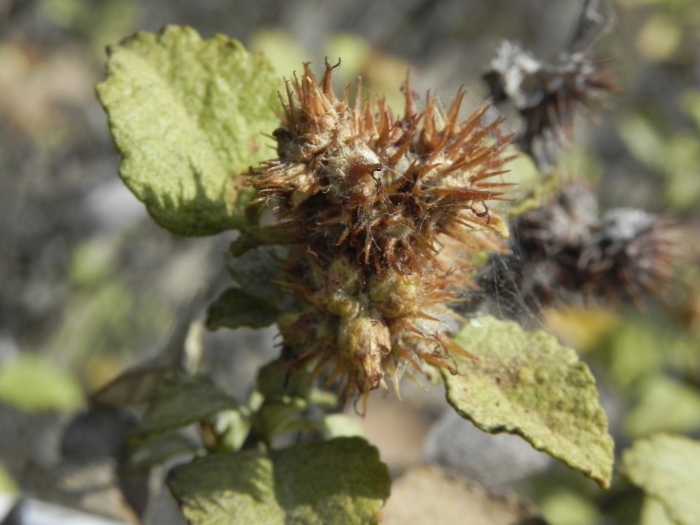San Diego Bursage
(Ambrosia chenopodiifolia)
San Diego Bursage (Ambrosia chenopodiifolia)
/
/

James Connolly Davis
CC BY-SA 4.0
Image By:
James Connolly Davis
Recorded By:
Copyright:
CC BY-SA 4.0
Copyright Notice:
Photo by: James Connolly Davis | License Type: CC BY-SA 4.0 | License URL: http://creativecommons.org/licenses/by-sa/4.0/ | Rights Holder: James Connolly Davis | Publisher: iNaturalist | Date Created: 2022-04-26T09:36:38-07:00 |

























Estimated Native Range
Summary
Ambrosia chenopodiifolia, commonly known as San Diego bursage or San Diego bur ragweed, is a perennial shrub native to the coastal sage scrub and chaparral communities of Baja California and Baja California Sur in Mexico, as well as Orange and San Diego Counties in California. It can exceed 10 feet in height and is characterized by its thickly branching habit and oval, sometimes lobed leaves that are up to 1 inch long and coated in white hairs. The plant’s inflorescences are spiny, and it produces spherical, woolly burs covered in hooked spines. The flowers are not particularly showy, but they are an important source of pollen for many types of insects.
San Diego bursage is valued for its drought tolerance and ability to thrive in poor, well-drained soils, making it suitable for xeriscaping and restoration projects in its native range. It requires minimal water once established and prefers full sun to part shade. While not commonly used in ornamental horticulture, it plays a significant role in habitat restoration and erosion control. Gardeners should be aware that the burs can be a nuisance and that the plant may cause allergic reactions in sensitive individuals due to its pollen.CC BY-SA 4.0
San Diego bursage is valued for its drought tolerance and ability to thrive in poor, well-drained soils, making it suitable for xeriscaping and restoration projects in its native range. It requires minimal water once established and prefers full sun to part shade. While not commonly used in ornamental horticulture, it plays a significant role in habitat restoration and erosion control. Gardeners should be aware that the burs can be a nuisance and that the plant may cause allergic reactions in sensitive individuals due to its pollen.CC BY-SA 4.0
Plant Description
- Plant Type: Shrub
- Height: 1.5-2.5 feet
- Width: 2-3 feet
- Growth Rate: Moderate
- Flower Color: Green
- Flowering Season: Spring, Summer
- Leaf Retention: Deciduous
Growth Requirements
- Sun: Full Sun
- Water: Low
- Drainage: Fast
Common Uses
Drought Tolerant, Low Maintenance
Natural Habitat
Native to coastal sage scrub and chaparral communities
Other Names
Common Names: San Diego Burr Ragweed, San Diego Bursage
Scientific Names: , Ambrosia chenopodiifolia, Franseria chenopodiifolia, Franseria lancifolia, Gaertnera chenopodiifolia, Gaertneria chenopodiifolia,
GBIF Accepted Name: